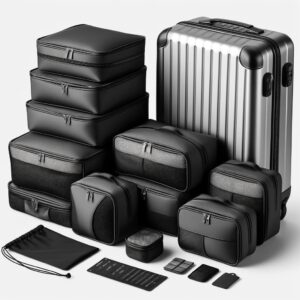Planning to travel to Peru? Get ready for an adventure full of discoveries and surprises! This beautiful South American country has so much to offer, from breathtaking landscapes to rich culture and history.
To make your trip even more exciting, we’ve put together a list of fun facts about Peru. We’ve gathered these during our own travels.
- Food: Peru has no less than 491 different typical dishes. Imagine: a country where every day of the year is a different culinary adventure. From the spicy ceviche that wakes up your taste buds to the delicate causa that melts in your mouth.
- Languages: Quechua and Aymara are not exotic, forgotten dialects, but vibrant co-official languages alongside Spanish.
- Cities: Lima is the capital, large and lively, but surprisingly not the biggest. That honor goes to Arequipa, which with its own charm and grandeur, rivals Lima.
- Population: About 45% of Peruvians are indigenous, a living legacy of ancient cultures. Add to that 37% mestizo and 15% of European descent, and you have a melting pot of people, stories, and history.
- Amazon Rainforest: The Amazon Rainforest covers half of Peru.

- Ancient City: Caral, the oldest known city in the Americas, dating back to the 3rd century BC. A place where time itself seems to have begun.
- Religion: About 80% of Peruvians are Catholic. Churches and cathedrals stand as sentinels over towns and villages, beacons of faith and history.
- Power Outlets: The outlets are type A and C. So you need a travel adapter for Peru.
- Confederation: From 1836 to 1839, Peru was in a confederation with Bolivia, a short-lived union of nations, full of hope and ultimately disillusionment.
- War of the Pacific: The War of the Pacific against Chile (1879-1883), a bitter struggle in which Peru lost two provinces.
- Famous Peruvians: Mario Vargas Llosa, the writer who brings words to life. Claudio Pizarro, the soccer player who scores goals. Gastón Acurio, the chef who put Peruvian cuisine on the world map.
- Economy: The economy relies on fishing, mining, and agriculture. The sea, the land, and the hard work of the people are the driving forces behind Peruvian life.
- Poverty: About 30% of Peruvians live below the poverty line. A harsh reality in a country of so much beauty and potential.
- Sacsayhuamán: The Sacsayhuamán temple complex near Cusco was once entirely covered in gold.
- Coca Leaves: On the high plateau of 13,000-20,000 feet, Peruvians chew coca leaves to combat altitude sickness. An ancient practice, a survival art.
- National Anthem: The national anthem of Peru is called “Somos libres, seámoslo siempre” (We are free, let us always be so). Words that live as a promise in the hearts of Peruvians.
- Potatoes: Peru is the origin of 3,000 types of potatoes.
- Corn: Peru has over 55 different types of corn in all colors. From white to yellow, purple, and black, a colorful rainbow on your plate.
- Gold: Peru is the 6th largest gold producer in the world, with a production of 162 tons in 2010, worth over $6 billion. A shining testament to the wealth in the Peruvian soil.

- Guinea Pig: The guinea pig, known as “cuy”, is a traditional Peruvian dish served whole during festivals. A unique delicacy with deep cultural roots.
- Shamans: Peru has the second largest population of shamans in the world, after India. Mystical healers who keep ancient traditions alive.
- Cotton: Peru produces the world’s finest cotton, known as ‘Pima’ and ‘Tanguis’. Soft as silk, yet strong and durable, a luxury for the skin.
- Waves: Peru has one of the world’s longest left-breaking waves in Chicama, which can break up to 1.4 miles long. A paradise for surfers.
- Caral-Supe: The ‘sacred city’ of Caral-Supe is the oldest settlement of indigenous Americans, dating back 5,000 years. A place where history becomes tangible.
- Lake Titicaca: Lake Titicaca, located in Peru, is the highest navigable lake in the world at 2.4 miles above sea level. A mirror of the sky on earth.
- Amazon River: The Amazon River originates in Peru, near Machu Picchu in the Andes Mountains. A lifeline that flows through the heart of the continent.
- Machu Picchu: Machu Picchu was a ceremonial district and resting place for the Inca ruler Pachacutec and his relatives.
- Floating Islands of Uros: The floating islands of Uros on Lake Titicaca are entirely made of reeds and are home to the Uros people. A unique lifestyle, floating on the water.
- Nasca Lines: The Nasca Lines are a series of ancient geoglyphs in the Nazca Desert that are only fully visible from the air. Mystical artworks in the sand.
- Cotahuasi Canyon: The Cotahuasi Canyon in Peru is one of the deepest canyons in the world, almost twice as deep as the Grand Canyon. A majestic gorge that shows the power of nature.
These were all the fun facts and facts we have collected. Do you know more? Let us know!


